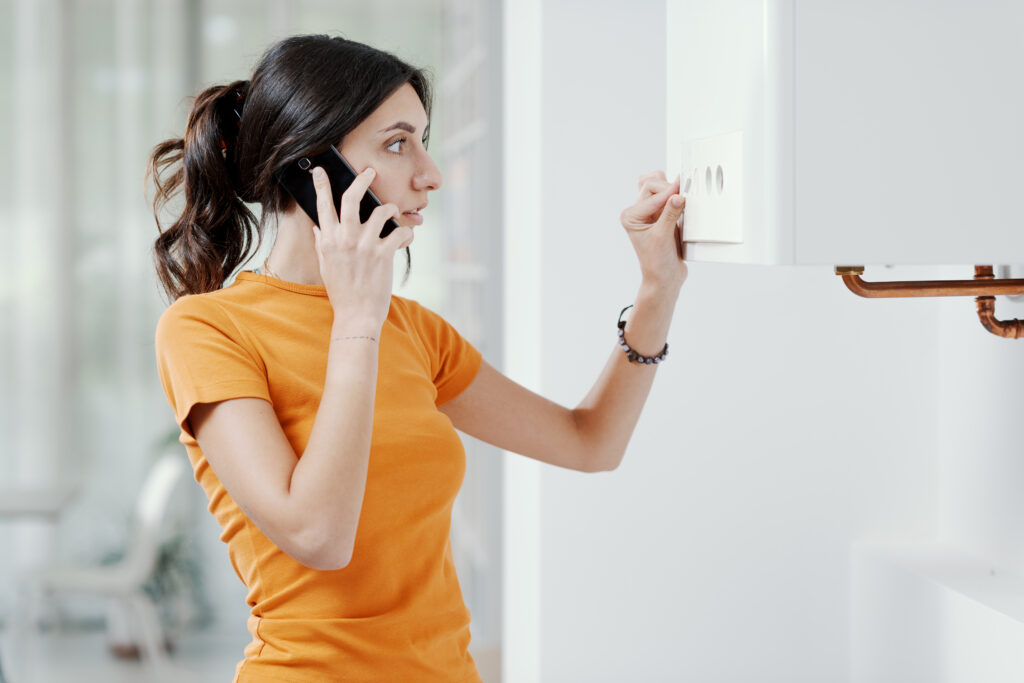A well-operating furnace is crucial for maintaining a comfortable home during the cold months. The moment your furnace stops working can be a major inconvenience, leaving you in a chill and searching for solutions. Fortunately, there are several checks you can perform yourself to identify and possibly correct the issue before seeking the help of a professional.
This article outlines six key steps to troubleshoot your furnace, empowering you with the knowledge to tackle common problems and restore warmth to your home efficiently.
1. Check the Thermostat
When your furnace isn’t heating your home, the first step is to examine the thermostat, a common culprit for heating issues. Ensure your thermostat is switched to the ‘Heat’ setting. It’s a simple oversight that can easily be missed. Additionally, the temperature should be set a few degrees higher than the current room temperature to prompt the furnace to start.
If you have a programmable thermostat, take a moment to review the schedule. It’s possible that the settings are not aligned with your current heating needs, especially if there has been a recent change in your routine or daylight savings adjustments.
Finally, don’t forget about the batteries. A thermostat with low or dead batteries can lose its settings and fail to communicate with your furnace. Replacing the batteries might be all it takes to get your furnace up and running again. This straightforward check can save you time and the expense of an unnecessary service call.
2. Inspect the Circuit Breaker
When faced with a malfunctioning furnace, a crucial step is to examine the circuit breaker. Start by finding the breaker panel and identifying the switch that powers your furnace. If this switch has moved to the ‘Off’ position, it indicates a tripped breaker. Carefully flip it back to ‘On’ to reconnect the power supply to your furnace, which might resolve the issue temporarily.
However, if the breaker disengages again, it’s a sign of a more complex electrical problem. Under these circumstances, it’s wise to seek the expertise of professionals. Reach out to contact qualified HVAC repair technicians for a thorough assessment and repair of your system. Attempting to fix persistent electrical faults without proper knowledge can be hazardous and may exacerbate the problem.
3. Clean or Replace the Air Filter
Maintaining a clean air filter is paramount for the optimal performance of your furnace. A congested filter not only impedes airflow but can also lead to overheating, severely diminishing the efficiency and lifespan of your heating system. To prevent such issues, it’s essential to either clean or replace your furnace’s air filter, adhering to the guidelines provided by the manufacturer.
This straightforward task can significantly enhance your furnace’s functionality by ensuring it receives the necessary airflow to operate effectively. Regularly attending to the air filter can forestall more serious complications, making it a crucial step in routine furnace maintenance.
4. Check the Gas Supply (Gas Furnaces Only)
For homes equipped with gas furnaces, verifying the gas supply is a crucial troubleshooting step when faced with heating issues. Begin by inspecting the gas line leading to your furnace, ensuring there are no visible blockages or closed valves that could restrict the flow of gas. It’s essential to ensure that the gas valve is fully open to allow proper fuel supply to your furnace.
However, it’s critical to approach this step with caution. If at any point you detect the smell of gas or suspect a leak, do not attempt any repairs or further inspections yourself. Gas leaks pose significant safety risks, including the potential for fire or explosion. In such situations, it’s imperative to evacuate the area immediately and contact a qualified technician to safely address the issue. Professional technicians are equipped with the necessary tools and expertise to safely repair gas leaks and restore the functionality of your furnace.

5. Look for Error Codes
Modern furnaces are often equipped with diagnostic systems that use indicator lights or error codes to signal issues within the unit. These codes can be a valuable first step in identifying what might be wrong with your furnace. Typically, you can find these codes displayed on the furnace itself or on the thermostat screen.
To make sense of what these codes mean, you’ll need to consult your furnace’s manual. Manufacturers provide detailed explanations of each error code, along with recommended actions for troubleshooting. This can range from simple fixes that you can do yourself to more complex issues that require professional attention. Understanding these codes can give you a clearer picture of the problem and guide you on the next steps to take, whether it’s attempting a DIY solution or calling in a technician.
6. Listen for Unusual Sounds
Paying attention to the sounds your furnace makes can provide vital clues about its condition. Unusual noises, such as grinding, banging, or clicking, often point to components that may be failing or require adjustment. For example, a grinding sound could indicate that the bearings in the blower motor are wearing out, while banging noises might suggest an ignition problem causing delayed gas ignition.
When you detect such sounds, it’s helpful to make a mental note or even record the noise if possible. This information can be incredibly useful when you communicate with a technician, providing them with a clearer understanding of the potential issue. Describing the sound and when it occurs (e.g., when the furnace starts up, while it’s running, or as it shuts down) can help the technician diagnose the problem more accurately and quickly.
In Conclusion
Addressing furnace issues promptly can prevent minor problems from escalating into major repairs. Remember, regular maintenance and early detection of issues are key to ensuring your furnace operates efficiently and safely. For problems beyond simple troubleshooting, always rely on the expertise of professional technicians to ensure your furnace is in optimal working condition.






